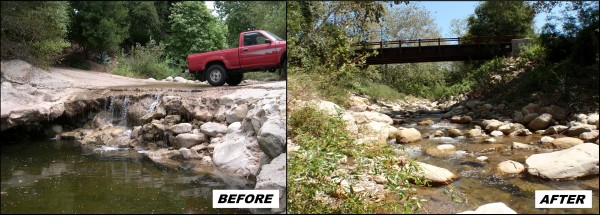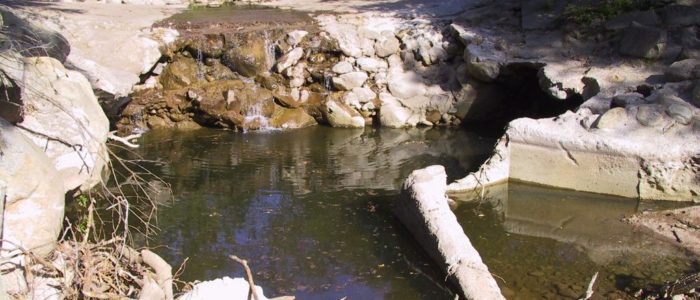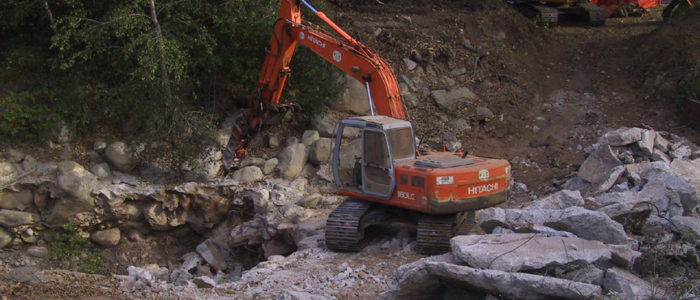Title: The Bliss Fish Passage Restoration Project
Cost: $900,000
Goals: Improve fish passage
Funders: Natural Resources Conservation Service, California Department of Fish and Game, California Coastal Conservancy, US Fish and Wildlife Service, National Oceanic Atmospheric Administration, Earth Island Institute, CDFG Office of Spill Prevention and Response, Southern California Wetlands Recovery Project, Los Padres National Forest
Partners: California Department of Fish and Game, California Conservation Corps, VJS Biological Consulting, Peter Lapidus Construction, Carpinteria Creek Watershed Coalition, Questa Engineering, National Resources Conservation Service, Cachuma Resource Conservation District, Santa Barbara County Flood Control District
The Bliss Steelhead Restoration Project involved the removal of a low flow crossing which was a major barrier to steelhead migration along the mainstem of Carpinteria Creek. The barrier was the first impassable barrier in the watershed, and resulted from scour on the downstream end of the crossing, which over time resulted in a 10 foot vertical jump height. SCHR worked with partners to secure the necessary permits and implementation funding for the construction of the project from the Department of Fish and Game, Natural Resources Conservation Service and the California Coastal Conservancy as well as other funding sources. The project goals were the removal of the low flow cement crossing from the creek and replacement with a clear spanning bridge in order provide safe passage of the federally endangered steelhead trout as well as year round safe passage across the creek for the property owners.
The construction phase of the project began in August of 2008 and finished that December. After the removal of the low flow crossing the channel was regraded and a series of three deep rock boulders key ways were installed to help stabilize the channel and prevent future barrier formation. Following construction the site was re-vegetated with native container stock, willow and sycamore stakes as well as native seed. The project was highly successful at restoring steelhead migration through this portion of the creek.




